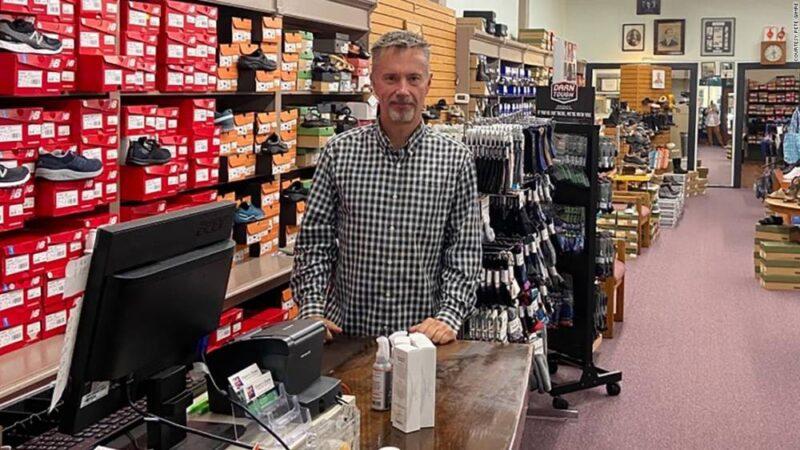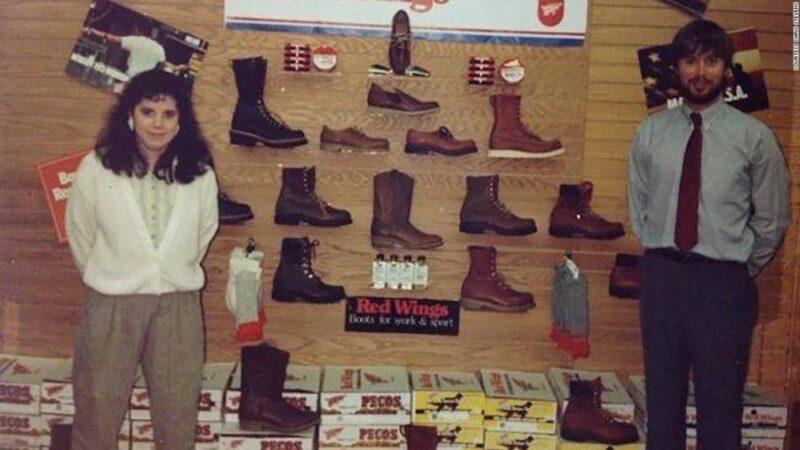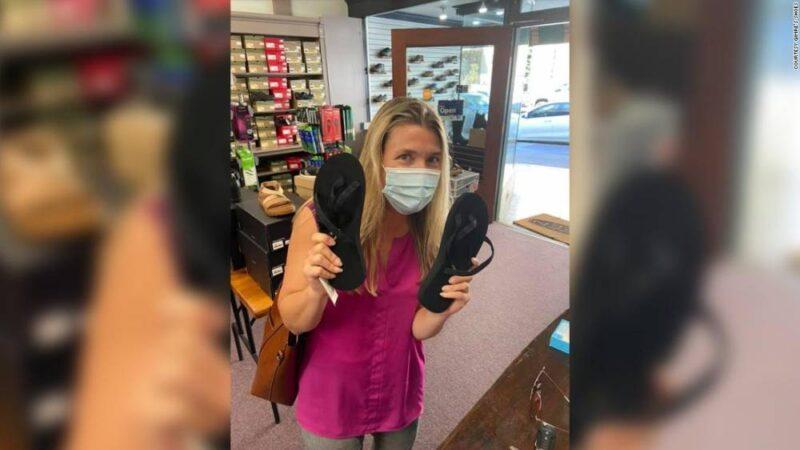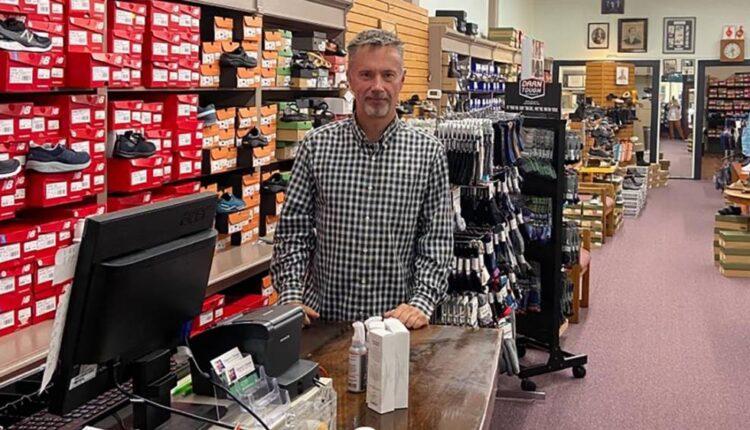You’d be hard pressed to find a small business owner who would call a 20% drop in revenue a “huge success.”
Except when your revenue was down 70% just months earlier, and you’re dealing with the relentless slings and arrows of 2020.That’s been the situation for Peter Gimre, owner of 128-year-old Gimre’s Shoes in the coastal city of Astoria, Oregon. His grandfather opened the shoe store in 1892, after immigrating from Norway, and it has stayed in the family ever since. Gimre, who is turning 60 this month, has worked at the store since he was 16. His father ran the store until he took over in 1984.
When CNN Business first spoke to Gimre in April, the entire state of Oregon was under stay-at-home orders. The store, which doesn’t sell its shoes online, had been closed for two weeks. He then attempted to work solo and provide curbside pickup a few hours a day, but he characterized that effort as “meaningless” since no one was out, and tourists — part of his customer base — had been banned from the area. With nearly three-quarters of his revenue lost at that point, Gimre didn’t think he could carry his business more than a few months. And he knew he wasn’t alone. Read More

At the beginning of the pandemic, Peter Gimre, owner of Gimre’s Shoes, didn’t think his business could survive for more than a few months.”I don’t know how anyone else can hope to stay in business,” he said at the time. But several things have happened since then that have helped him stay afloat. At the end of April, Gimre got a federal Paycheck Protection Program loan, which let him bring back his employees, whom he had furloughed soon after stay-at-home orders were issued.”If I hadn’t had the loan, who knows what would have happened?” Gimre said. “It was a true lifeline.”
We're surviving, but it's a whole new ballgame."
He reopened his store to walk-in customers on May 15, but at reduced capacity — he isn’t allowed to have more than eight customers inside at any one time for social distancing purposes. He also cut his store hours by an hour a day and no longer opens on Sundays. Gimre has also reduced his expenses, too, helping to offset some of the lost revenue. He no longer spends money on marketing and advertising. And his payroll costs have fallen because two of his three full-time staffers have quit for personal reasons and the third opted to go part-time. After reopening to walk-in customers, sales started picking up. While they were still down 20% in August, Gimre is grateful to be back in business. Thanks to his PPP loan and lower expenses, he said, “we’re surviving, but it’s a whole new ballgame.”If the pandemic takes another bite out of the economy the way it did this spring, Gimre isn’t sure how he’d fare. “If it happens now, I have a cushion. If it happens next spring, I don’t know what my cash flow will be at that point.”
Rehiring a long-time employee
Chris Stevens worked at Gimre’s Shoes from 1983 to 1993, then returned in 2011 after raising her family. She switched to a part-time schedule at the store after returning from a month-long furlough in May. Since the store re-opened to walk-in customers, it’s primarily been Stevens and Gimre working there, in addition to a part-time office manager.

They go back a long ways. Peter Gimre (right) and his longtime employee Chris Stevens, in 1985. All three of her children — now adults — lost their jobs during the pandemic, she said. And one of her daughters, who was pregnant, moved back into her mother’s house with her fiancé. When Stevens was furloughed, she said she didn’t have trouble securing unemployment benefits, including the temporary $600 supplemental payment. Combined, the payments were more than she earned while working. “It helped a lot because my daughter was living at home and couldn’t get her’s for awhile,” she said.She’s not sure how long she will stay part-time. Beyond wanting to help out with her first grandchild, who was born in May, Stevens said she has underlying health conditions that make the risk of getting Covid-19 a little scarier. “I don’t know what my schedule will be going forward. Everything is in such limbo.”
Planning for an unclear future
Limbo is exactly where Gimre finds himself, too. Normally, he orders each season’s shoes six months in advance. But what will next spring look like in terms of the pandemic and the economy? He has no idea.

Leslie Claterbos is a repeat customer at Gimre’s Shoes. Nor can he predict what will happen with the supply chain. Gimre said he’s already experienced delays of weeks and even months for some of his merchandise.”I’m very uncomfortable with my crystal ball. … I don’t know how to buy going forward,” he said.One thing that isn’t a mystery right now: His need to keep cleaning products and protective gear well-stocked. Part of the job of selling shoes today, he and Stevens said, is wearing masks, regulating foot traffic so there are not too many people in the store at once, and sanitizing everything customers touch. That includes the shoes they try on, the chairs they sit on, and the devices used to measure a person’s foot.
Staying afloat with a boost from community
Running a small business is always hard. And doing so during a health and economic crisis is an especially tall order. But it’s one Gimre wants to keep fulfilling for his customers — many of whom are referred by doctors who want to make sure they are outfitted with the proper shoes.
That his business has managed to financially survive this many months into the pandemic gives Gimre some comfort. But what also keeps him going, he said, is the emotional support he gets from his community. A lot of loyal customers have told him that they would rather buy from his store than anywhere else. “Just hearing that on a regular basis feeds the soul and makes us want to do all we can to stay in business, which we will,” he said.
Source: edition.cnn.com

